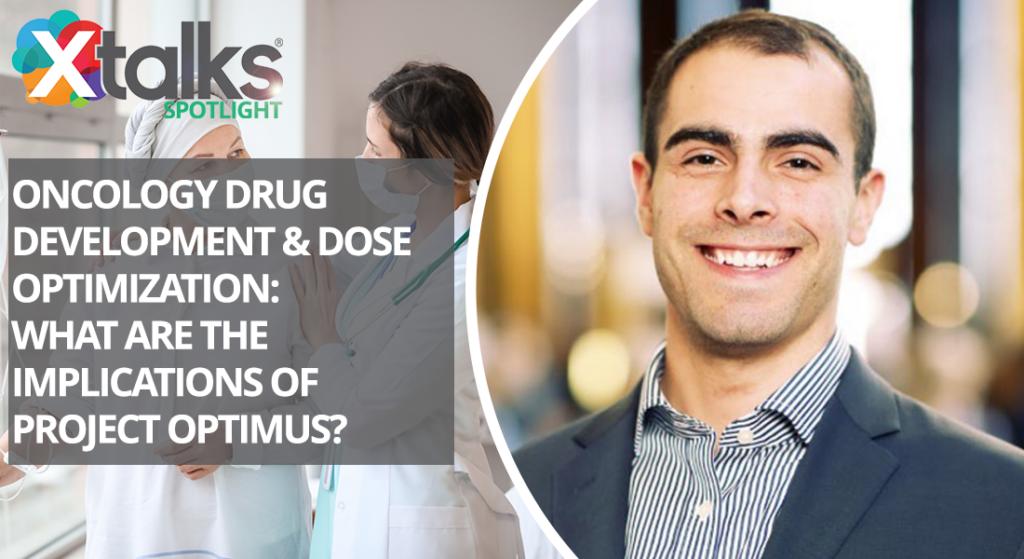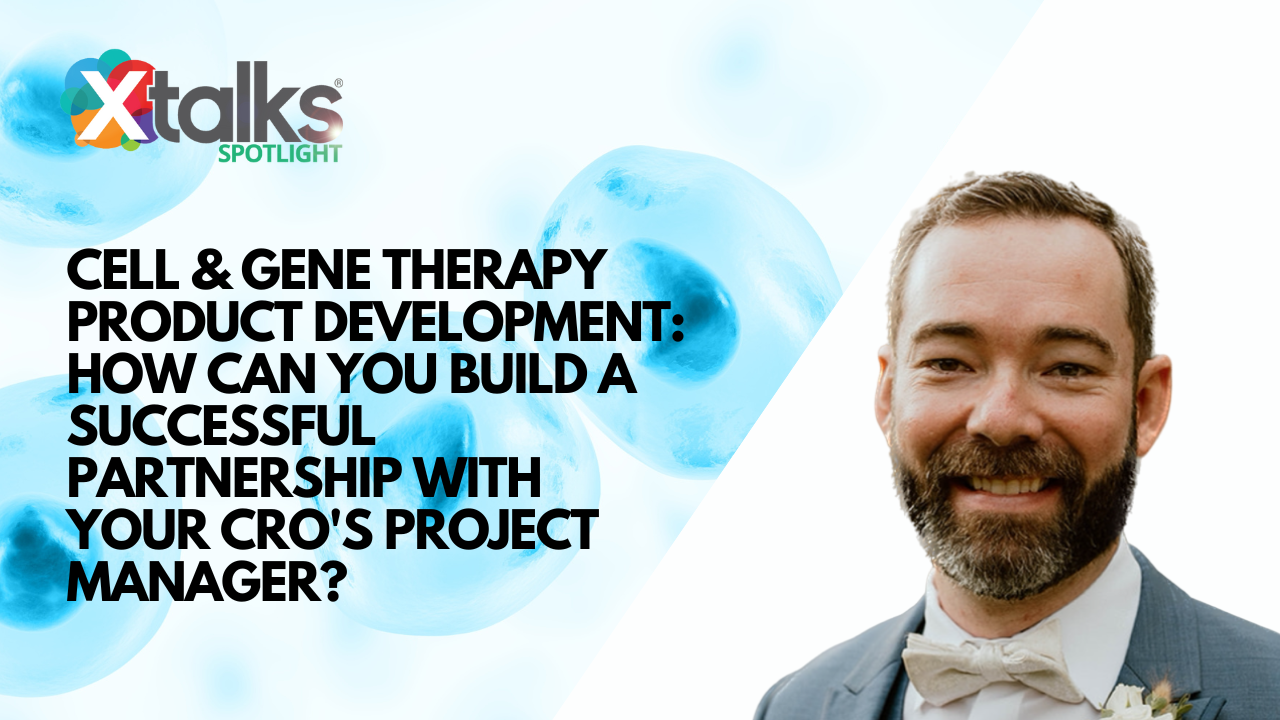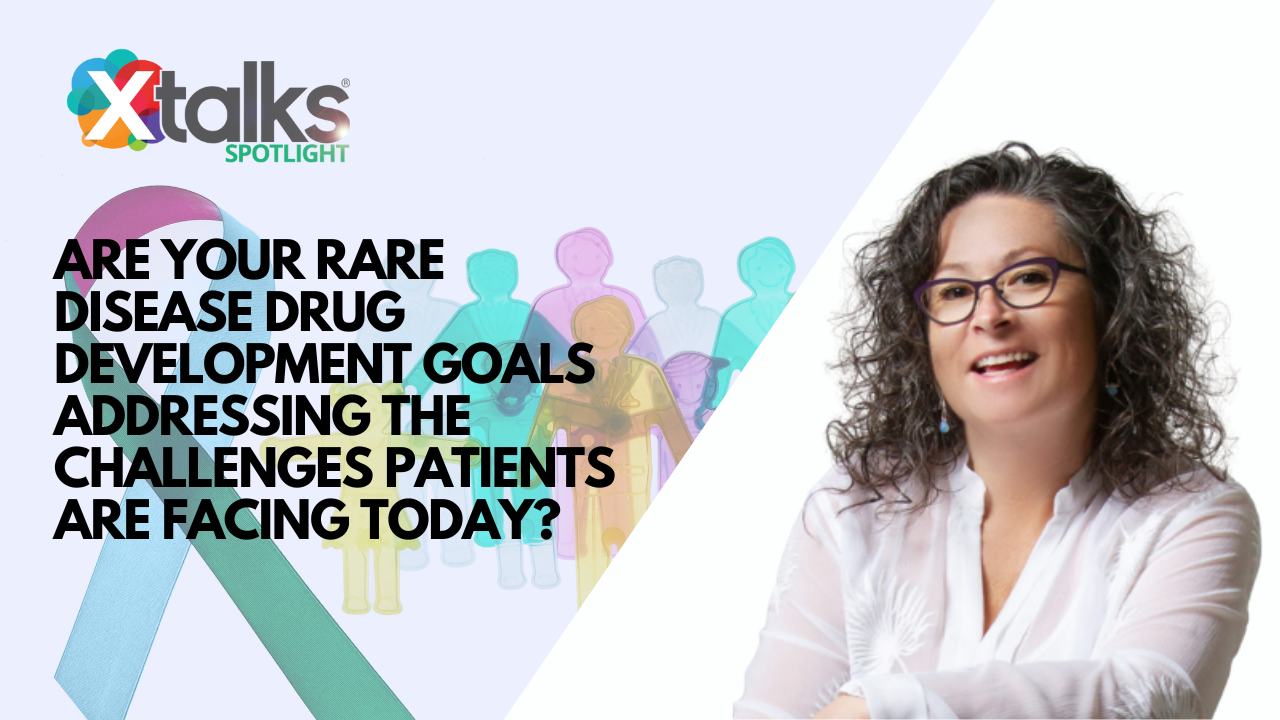Most oncology products approved in the past few decades are known for being highly toxic, non-specific and fraught with severe side effects for cancer patients. This was because higher doses often correlated with a better reduction in tumor size, so trial designs were predicated on obtaining the maximum tolerated dose (MTD).
But today, with a rise in molecularly targeted therapies, oncology development has shifted to identifying an optimal biologic dose that balances toxicity with efficacy. Emblematic of this shift, the US Food and Drug Administration (FDA) now requires all sponsors developing targeted as well as non-targeted therapies to pursue early-phase dose optimization through their focused effort, Project Optimus.

Assistant Director,
Clinical Research Methodology,
Worldwide Clinical Trials
In this Xtalks Spotlight edition, Xtalks spoke with Matthew Confeld, PharmD, PhD, Assistant Director of Clinical Research Methodology at Worldwide Clinical Trials, about Project Optimus and what it means for oncology programs.
“Project Optimus is intended to reform the dose optimization and dose selection paradigm in oncology drug development,” says Dr. Confeld.
At Worldwide, Dr. Confeld provides strategic scientific, medical and regulatory support services to sponsors across all phases of drug development.
He explains that all sponsors, whether they are developing cytotoxic or targeted therapies, and anyone involved in early-phase clinical research, must be aware of and adhere to the FDA’s new requirements, as these represent the agency’s current expectations.
Understanding Project Optimus and Its Impact on Sponsors
Project Optimus marks a substantial shift in the approach to oncology drug development.
Historically, cancer therapeutics were developed based on the notion of a linear dose response, where increasing doses were believed to result in better tumor responses and efficacy. This led to the establishment of the “MTD” for cancer treatments, which then guided further drug development and approval.
According to Dr. Confeld, the real-world application of these high-dose treatments revealed major challenges. Patients, particularly those with multiple health issues, often couldn’t tolerate these high doses for the intended duration, leading to adverse events and therapy discontinuation. Additionally, physicians faced difficulties in adjusting doses for such patients due to a lack of supporting data.
Project Optimus emerged in response to these challenges, intending to reform the dose optimization and selection standards in oncology drug development.
“Project Optimus aims to ensure optimal treatments and dose regimens for patients, improve overall outcomes in cancer treatment and provide physicians better guidance for managing therapies,” says Dr. Confeld.
Project Optimus is part of a broader effort that includes the FDA’s Oncology Center of Excellence (OCE), established after the passage of the 21st Century Cures Act in 2016. The OCE aims to accelerate scientific discovery, foster collaboration and improve the sharing of cancer data.
Pursuing Dose Optimization
Dose optimization involves a comprehensive approach to determining the most effective and safe dosage of a drug. This process is becoming increasingly complex due to the larger volume of data being collected in modern clinical trials compared to a decade ago.
The key aspects of dose optimization include:
- Efficacy: Assessing how well the drug works at different doses.
- Response time and duration: Evaluating how quickly the drug takes effect and how long the effects last.
- Dose-limiting toxicities: Identifying the highest dose levels at which a patient can tolerate the drug without experiencing unacceptable side effects.
- Relative dose intensity: The amount of the drug actually administered relative to the optimal dose.
- Long-term safety: Chronic low-grade adverse events and delayed toxicities may negatively impact patient outcomes.
“Overall, dose optimization is about looking at all these data points to determine which dose level or dose regimen has the best benefit-to-risk ratio,” says Dr. Confeld.
Achieving Phase II Dose Approval in Oncology Drug Development
Gaining regulatory acceptance for a Phase II drug dose is a crucial aspect of drug development. According to Dr. Confeld, development programs must investigate at least two doses in expansion cohorts, involving around 10 to 20 patients each. Additionally, all the available clinical data and any supporting nonclinical data must be reviewed and compiled to help justify and gain acceptance of the recommended Phase II dose ahead of any large, pivotal or confirmatory studies.
An integral part of this process is the detailed examination of safety data. This includes a careful analysis of dose-limiting toxicities, serious adverse events and all treatment-emergent adverse events. Ensuring that the selected dose is safe for patients is vital.
Furthermore, an in-depth analysis of preliminary efficacy, pharmacokinetics (PK), pharmacodynamics (PD) and dose-exposure response are increasingly emphasized. This analysis helps understand the drug’s behavior in the human body and its interaction with various physiological parameters. Also, modeling and simulation data, often overlooked, can further support the case for a particular dose. Finally, summarizing potential drug-drug interactions and overlapping toxicities, especially in combination therapies, is indispensable.
Dr. Confeld also highlights the importance of considering various patient factors. “The effects of intrinsic and extrinsic factors such as ethnicity, age, weight, renal and hepatic function can all have effects on how that patient responds,” he notes. These factors are crucial in determining the appropriate dose for a diverse patient population.
Finally, engaging in Type D meetings with the FDA is a pivotal moment in this process. As Dr. Confeld describes, “This meeting allows for a targeted discussion of your dose and the information you have to support it.” If the data presented is convincing, the FDA may agree with the recommended Phase II dose, allowing the program to move forward to the more extensive pivotal Phase II study.
Trial Designs for Identifying the Optimal Dose
When it comes to clinical trial designs for finding the optimal dose, Dr. Confeld points out that there’s no one answer and that the approach varies based on the drug and patient population.
Traditional methods like the “3 + 3 design” are giving way to more innovative, model-assisted study designs. A notable example is the Bayesian Optimal Interval (BOIN) design, which gained regulatory acceptance as a fit-for-purpose design methodology in 2021. According to Dr. Confeld, model-assisted designs have shown a better ability to select the true MTD or optimal biological dose, treating fewer patients with ineffective or overly toxic doses.
Key to these modern designs is their adaptability in adjusting dose levels and the number of patients per dose. The “backfilling” approach allows for adding more patients to promising cohorts as new data emerges, ensuring a more thorough exploration of dose efficacy and safety.
Dr. Confeld suggests not just adjusting dose amounts but also exploring alternative dosing regimens, like changing from daily to five-days-a-week schedules. This can uncover more effective dosing strategies.
“The best protocol design is likely the one that causes the least delays while still providing the opportunity for informed decisions. A universally effective technique is to have an integrated research and development team that reviews the totality of data continuously to make real-time adaptations,” shared Dr. Confeld.
Challenges and Strategies Necessary in the New Era of Project Optimus
Dr. Confeld believes one of the primary challenges in the new age of Project Optimus is the increased difficulty in identifying and justifying the recommended Phase II dose and regimen. Doing so requires a deeper focus on pharmacology and nonclinical exposure data, the use of clinical pharmacodynamic biomarkers and tests, and continuous endpoints.
There is also a growing emphasis on diversity and inclusion in clinical trials. New regulations are now mandating a diversity plan for late-phase programs to address the historical underrepresentation of minorities and ethnic groups in cancer clinical trials.
Regarding compliance with Project Optimus, Dr. Confeld advises sponsors to proactively engage with the FDA. Using opportunities like pre-IND meetings and End-of-Phase I meetings, especially the new Type D meetings, are crucial for posing specific questions and receiving timely responses.
Collaboration with a contract research organization (CRO) experienced in clinical trial methods and translational research is also vital. “At Worldwide, the integrated development team consists of oncologists, pharmacokineticists, translational researchers and regulatory advisors, ensuring that clinical studies are scientifically rigorous, medically appropriate and operationally feasible,” says Dr. Confeld.
For more insights into advancing oncology clinical trials, be sure to watch the Spotlight feature with Dr. Confeld. Dr. Confeld will also be hosting a webinar later this week on Project Optimus and other key projects from the OCE titled: FDA Oncology Center of Excellence: Programs & Projects That Impact Drug Development.
This article was created in collaboration with the sponsoring company and the Xtalks editorial team.








Join or login to leave a comment
JOIN LOGIN